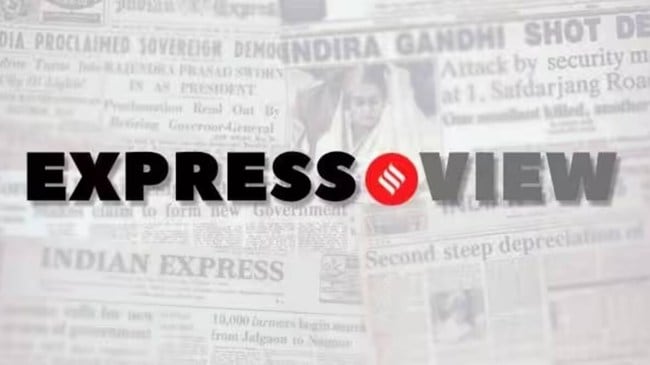Opinion UP government order on ‘caste-based signs’: Don’t silence the marginalised
Assertion of caste by upper caste individuals or groups might, intentionally or otherwise, intimidate marginalised castes. For the latter, in contrast, public displays of identity – especially in political contexts -- are a way to counter historical injustices.
 The UP government should limit the directive’s ambit — it should go by the HC order.
The UP government should limit the directive’s ambit — it should go by the HC order. Through much of the freedom struggle and in the decades since Independence, India’s politics and democracy have contended with caste — as an axis of historical and ongoing discrimination, an arena for affirmative action, and one of the primary modes of political and social mobilisation. While navigating these complexities is an ongoing task, the Uttar Pradesh government’s decision to prohibit “public display of caste-based signs” during political rallies, citing that it might promote conflict, turns the clock back and undermines the gains made through an evolving politics. The government’s directive issued to state officials is welcome insofar as it asks the police not to reveal the caste of an accused — this is inherently discriminatory and could impact investigations. However, the decision not to allow caste markers across public spaces, including vehicles and rallies, presumes a non-discriminatory society. The directive appears blind to the ground realities, especially the various ways in which caste operates today. Assertion of caste by upper-caste individuals or groups might, intentionally or otherwise, intimidate marginalised castes. For the latter, in contrast, public displays of identity — especially in political contexts — are a way to counter historical injustices. The UP government’s decision blurs this line and undermines the long struggle for visibility and equality. It also flies in the face of the Centre’s decision to enumerate caste in the upcoming Census for the “holistic interests and values of the nation and society”.
The UP government’s directive followed the Allahabad High Court’s September 16 order, which asked the Home Department and the DGP to frame and implement standard operating procedures to prohibit the disclosure of caste in any police documents except for the cases filed under the Scheduled Castes and Scheduled Tribes (Prevention of Atrocities) Act, 1989. Criticising the practice of putting up caste identifiers on cars, homes and slamming the social media reels that “often romanticise caste aggression and dominance, rural masculinity, and regressive honour codes”, the court observed: “The socio-psychological, cultural, and legal dimensions of such behaviour reveal how the assertion of caste in public domains undermines constitutional morality and reflects an identity crisis rooted in historical superiority and modern insecurity.” The HC order echoes the essence of SC/ST (PoA) Act, which considers intentional insult or intimidation “with intent to humiliate” a member of the SC or ST communities in any place within public view, an offence. In contrast, the government directive is a blunt instrument, ill-suited to the complexities of caste discrimination and assertion.
The directive goes against the spirit of the rights to equality (Articles 14-18), and freedom of expression and speech, and assembly in Articles 19(1)(a) and (b). Historical injustice and lack of representation are recognised by the Constitution, just as free speech is protected by it. Caste mobilisation is a phenomenon across the political spectrum. From the Brahmin Mahapanchayat in Rajasthan to the BJP’s allies in UP — NISHAD party, Suheldev Bhartiya Samaj Party or Apna Dal — caste-based mobilisations are not uncommon. The path to the “annihilation of caste”, as B R Ambedkar saw it, was not by ignoring its realities. In fact, he suggested the opposite: Recognition of caste discrimination and targeted affirmative action. The UP government should limit the directive’s ambit — it should go by the HC order.




